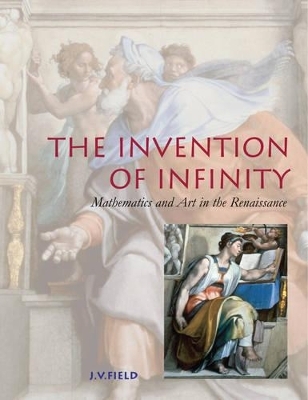
The Invention of Infinity
Mathematics and Art in the Renaissance
Seiten
1997
Oxford University Press (Verlag)
978-0-19-852394-9 (ISBN)
Oxford University Press (Verlag)
978-0-19-852394-9 (ISBN)
This book tells (for the first time) the story of how the `practical' mathematics of Renaissance artists influenced the development of `proper' mathematics. The text is clear, lively, and scholarly, and is accompanied by beautiful colour and black and white illustrations. It will appeal to anyone with an interest in science or art.
Renaissance craftsmen, such as painters, were educated in `practical mathematics'. This book tells us the fascintating story of how the artisan tradition made important contributions not only to art but also to `proper' mathematics. Beautiful works of art and famous theorems are linked together in a way that leads to a clearer understanding and greater enjoyment of both.
Covering roughly the period from 1300 to 1650, the author shows how, during this time, a new form of geometry - projective geometry - emerged in the context of the artists' mathematics of perspective. Stories of taking measurements while balanced on scaffolding are interspersed with delightful scholarly analyses of the mathematics of great works of art. The text is beautifully illustrated throughout with both photographs and drawings.
Renaissance craftsmen, such as painters, were educated in `practical mathematics'. This book tells us the fascintating story of how the artisan tradition made important contributions not only to art but also to `proper' mathematics. Beautiful works of art and famous theorems are linked together in a way that leads to a clearer understanding and greater enjoyment of both.
Covering roughly the period from 1300 to 1650, the author shows how, during this time, a new form of geometry - projective geometry - emerged in the context of the artists' mathematics of perspective. Stories of taking measurements while balanced on scaffolding are interspersed with delightful scholarly analyses of the mathematics of great works of art. The text is beautifully illustrated throughout with both photographs and drawings.
J. V. Field is a Research Fellow in the Department of History of Art at Birkbeck College, University of London.
1. Medieval mathematics and optics and the Renaissance style in art ; 2. Building, drawing and 'artificial perspective' ; 3. Through the wall: Masaccio's Trinity fresco ; 4. Piero della Francesca's mathematics ; 5. Piero della Francesca's perspective treatise ; 6. Practitioners and patricians ; 7. The Professionals move in ; 8. Beyond the Ancients ; 9. Fragmented perspective ; Appendix 1 The abacists' favourite scalene triangle: 13, 14, 15 ; Bibliography
| Erscheint lt. Verlag | 24.4.1997 |
|---|---|
| Zusatzinfo | numerous halftones and line figures |
| Verlagsort | Oxford |
| Sprache | englisch |
| Maße | 197 x 253 mm |
| Gewicht | 702 g |
| Themenwelt | Kunst / Musik / Theater ► Kunstgeschichte / Kunststile |
| Sachbuch/Ratgeber ► Natur / Technik | |
| Geschichte ► Teilgebiete der Geschichte ► Technikgeschichte | |
| Mathematik / Informatik ► Mathematik ► Geschichte der Mathematik | |
| Naturwissenschaften | |
| ISBN-10 | 0-19-852394-7 / 0198523947 |
| ISBN-13 | 978-0-19-852394-9 / 9780198523949 |
| Zustand | Neuware |
| Haben Sie eine Frage zum Produkt? |
Mehr entdecken
aus dem Bereich
aus dem Bereich
Buch | Softcover (2024)
Lehmanns Media (Verlag)
CHF 27,90
Digitalisierung neu denken für eine gerechte Gesellschaft
Buch | Hardcover (2023)
Quadriga (Verlag)
CHF 27,95
Vom Perceptron zum Deep Learning
Buch | Softcover (2022)
Springer Vieweg (Verlag)
CHF 27,95


